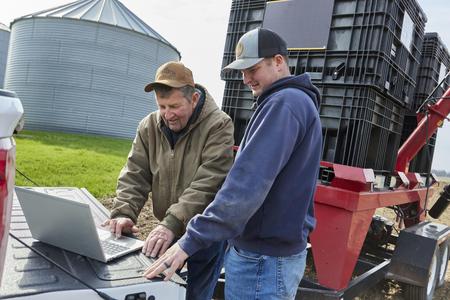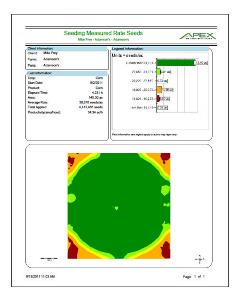Mega Menu
Mega menu is possible in BS5 but we will need to create a custom template layout for the navigation widget. The following is a hard-coded example.

Font Awesome 6
FA6+ icons will work on all widgets.
The FMH Icon box will need a new version created because the styling is broken in Bootstrap 5 templates (this has nothing to do with FA).
FMH Icon Widget
Icons can now be used in Content blocks by pasting the HTML tags from www.fontawesome.com into the HTML editor.
Here are some new icons from Font Awesome 6
face-awesome
envelopes
wheat-awn
Bootstrap Components
Code snippits from http://getbootstrap.com pasted into Content Blocks.
h1. Bootstrap heading
h2. Bootstrap heading
h3. Bootstrap heading
h4. Bootstrap heading
h5. Bootstrap heading
h6. Bootstrap heading
Nav Tabs
Nav Pills
Accordion
.accordion-body, though the transition does limit overflow.
.accordion-body, though the transition does limit overflow.
.accordion-body, though the transition does limit overflow.
Tables
| # | First | Last | Handle |
|---|---|---|---|
| 1 | Mark | Otto | @mdo |
| 2 | Jacob | Thornton | @fat |
| 3 | Larry the Bird | ||
Alerts
Image Carousel
Modals
Sitefinity Widgets
Default, out of the box, Bootstrap 5 templates available for widgets.
The navigation template used above is called Horizontal.
Navigation Widget - Tabs Template
Navigation Widget - Pills Template
Breadcrumb
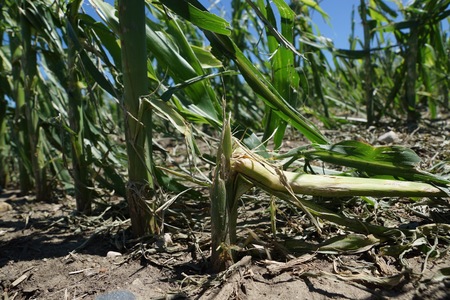

List Widget - Expandable List Template
Precision Claims FAQs
List Widget - Simple List Template
Crop Claims Reminders
-
How To Report MPCI Claims
-
MPCI Claim Reporting Deadlines
-
Appraisals
-
Production Records by Unit
-
Production Delivered to a Commercial Elevator
-
Production From Precision Farming Technology Systems
-
Production Weighed and Farm Stored
-
Authorization for Load Records, Storage Structure Marking, or Combine Monitor Records
-
Fed Production
-
Quality Adjustment
-
What is a Simplified Claim?
-
What can insureds do to expedite the claim process?
List Widget - Anchor List Template
Quality Control Review FAQ
- What can an Insured do to prepare for a review?
- What can Agents do to prepare for a review?
- How does the review process begin?
Quality Control Review FAQ
What can an Insured do to prepare for a review?
Third party documentation (i.e. summary/settlement sheets from the elevator) is required when applicable and available. Insureds are expected to have available hard copy records that will 1) support the total production raised for the crop/county/year being reviewed and 2) that can demonstrate how production was kept separate between various units, practices and types (if applicable).
Insureds will also want make themselves available to meet with the quality control reviewer as the reviews will need to be completed before the claims can be processed.
What can Agents do to prepare for a review?
How does the review process begin?
Documents List - Documents List Template
Documents List - Documents List Template
| Title | Type | Size | |
| 602 KB | DownloadFMHQ Release 2 Guide | ||
| 405 KB | DownloadWFRP Checklist for Agents 2026 | ||
| 504 KB | DownloadWFRP Policy Provisions 2026 | ||
| 3231 KB | DownloadWFRP Handbook 2026 | ||
| 203 KB | DownloadECO_MCO_SCO_Coverage Comparison Flyer |
News Widget - News List Template
News list template is the only template available by default.
6 Reasons Why You Should Consider ECO This Year
Enhanced Coverage Option, or ECO, is the new federal product making headlines this spring. With coverage up to 95 percent of expected crop value, it’s no wonder this insurance endorsement is catching the attention of so many.
To learn why farmers should consider adding ECO to their risk management plans this year, we spoke with two ECO experts from Farmers Mutual Hail: Ryan Benes, FMH Strategic Account Manager, and Ken Ripley, FMH Regional Sales Manager and Assistant Vice President of Sales.
1. ECO doesn’t have the same restrictions as SCO.
While ECO has been called a sister product to SCO, or Supplemental Coverage Option, there are differences that make it accessible for more farmers.
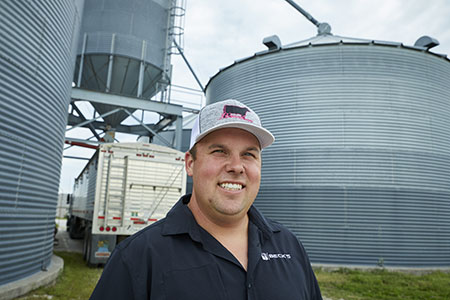 “If you know what SCO is, you’re already halfway there,” said Benes. “Just like SCO, ECO is going to follow the underlying plan type: it uses the same prices, it has the same sales closing date, and ECO is an area-based plan of insurance. What makes it enhanced? ECO offers 95 or 90 percent coverage down to 86 percent.”
“If you know what SCO is, you’re already halfway there,” said Benes. “Just like SCO, ECO is going to follow the underlying plan type: it uses the same prices, it has the same sales closing date, and ECO is an area-based plan of insurance. What makes it enhanced? ECO offers 95 or 90 percent coverage down to 86 percent.”
SCO’s highest trigger level caps out at 86 percent.
Ripley added, “Unlike SCO, where that could only be purchased if you signed up for Price Loss Coverage (PLC) at the Farm Services Agency (FSA) office, ECO can be purchased regardless of what you sign up for. That’s a big win and simplifies it.”
2021 is an election year for producers to choose either PLC or Agriculture Risk Coverage (ARC) at their FSA office. Producers can add both SCO and ECO to their crop insurance plans but should talk to their FMH agent about the best options for their risk management needs.
2. ECO is an endorsement on top of existing coverage – yes, you can even have a “gap.”
ECO can be added to either revenue or yield individual plan types, and to any underlying coverage level.
“There’s no level requirements with ECO, meaning you don’t need to have a certain level of coverage on your underlying buy-up plan in order to purchase ECO at 95 percent level,” explained Benes.
“In the past, some of the push back with similar products were if you had a 75 percent policy, you were forced to buy up to 85 percent [to qualify for those higher coverage levels]. Now we can have that gap,” said Ripley. “That’s a big win – having the opportunity to put a higher trigger in but keep the individual level low.”
Ripley added that allowing the gap in coverage makes adding ECO’s higher level coverage more affordable.
3. Do your farm's yields usually trend in the same pattern as county yields?
As an area-based plan, ECO pays when the county experiences a loss, not the individual farm.
 “When you think about an area plan, you have to start thinking about your county. All losses are going to be based on how that county performs versus the individual producer’s actual loss or production,” said Ripley. “With ECO, you could get hit and the county wouldn’t get hit, and you’re not going to be covered.”
“When you think about an area plan, you have to start thinking about your county. All losses are going to be based on how that county performs versus the individual producer’s actual loss or production,” said Ripley. “With ECO, you could get hit and the county wouldn’t get hit, and you’re not going to be covered.”
He went on to explain how the Risk Management Agency (RMA) sets an Expected County Yield in the spring for each county, “which is like the county’s APH.” That number will be used along with the Actual County Yield to determine if a loss is triggered for ECO.
“Because it’s an area-based plan, we always have to look at what the Actual County Yield was instead of your individual production coming in. So, to come up with an area yield, we have to get production from all the producers in the county. That takes time – in a lot of areas, the last date to report production is in the month of April. So, after that gets in and processed, we’re looking at a June payment with this product,” explained Ripley.
While a later claim payment and spot loss exposure concerns might deter some producers from ECO, Ripley said to do your own research with your FMH agent to determine if it’s right for you.
“I would encourage the grower to truly look at their risk needs on their farm. If their risk needs are tied to spot losses like wind or hail events, they definitely want to stay with private products. Look at your risk portfolio and buy the product that best fits your needs,” he said.
4. The data doesn’t lie: ECO pays.
ECO offers 95 or 90 percent coverage down to 86 percent, a range that is considered shallow because the county’s actual yield or price only needs to drop a few points to trigger a loss, and thus a payment.
 “We’re going to get some payments with this,” said Benes. “It has a very shallow loss trigger level of 95 percent. So, when we look at the Expected County Yield and if we’re going to come in lower than 5 percent of the yield, then we’re going to trigger a payment. If we look at revenue, and we fall more than five percent from an average year, then we’re going to trigger a payment.”
“We’re going to get some payments with this,” said Benes. “It has a very shallow loss trigger level of 95 percent. So, when we look at the Expected County Yield and if we’re going to come in lower than 5 percent of the yield, then we’re going to trigger a payment. If we look at revenue, and we fall more than five percent from an average year, then we’re going to trigger a payment.”
Benes calculated just how often this shallow loss trigger might occur with some real county historical data.
“I picked a county up in Ken’s neck of the woods and one near me: Blue Earth County, Minnesota, and Dallas County, Iowa. I looked back at the last 19 years’ worth of data to get an estimate of what kinds of payments we would have received over that time with ECO. For both Dallas County and Blue Earth County, ECO would have paid at the 95 percent level in nine of those 19 years for corn. That’s just under 50 percent! We are going to trigger payments fairly often with ECO because it is such a high level of coverage.”
5. ECO is available almost everywhere and covers 31 different crops.
Traditionally, area-based plans have not been popular in the western half of the U.S. Benes explained why that is, and why producers in those states shouldn’t overlook ECO just yet.
“We see a lot more area-based plans sold east of the Mississippi in general and there’s a couple of good reasons for that,” he said. “One is we just don’t get as much hail and not as much wind. Essentially, not as many of those spot losses. For producers west of the Mississippi, those are real risks they face.
“Another reason is just pure geography. If you look at the size of a county, say, in Indiana compared to the size of a county in South Dakota, those size of counties are quite a bit different. If I farm in a county that is geographically smaller, I am more likely to trend with that county yield versus if I am in a much larger county.”
So, what makes ECO different? Benes points to how the product can work with individual-based plans:
 “With ECO, that [area-based] trend doesn’t necessarily have to hold true. The main reason being that I, as a producer, still get to keep my individual underlying coverage. I don’t have to give that up at all. This is just a chance for me to buy extra coverage to capture those shallow yield losses – those shallow revenue losses in particular – where I might not have been able to be even close to capturing those small losses.”
“With ECO, that [area-based] trend doesn’t necessarily have to hold true. The main reason being that I, as a producer, still get to keep my individual underlying coverage. I don’t have to give that up at all. This is just a chance for me to buy extra coverage to capture those shallow yield losses – those shallow revenue losses in particular – where I might not have been able to be even close to capturing those small losses.”
6. ECO is actually pretty affordable.
ECO has a lot of factors working in the grower’s favor in terms of cost: area-based plans are usually less expensive than individual plans, the gap in coverage means growers don’t need to “buy-up” to that higher coverage level, and it’s a subsidized product as part of the federal program. Plus, ECO has a Percent of Price Option that can lower the premium cost but still allow that higher coverage band.
“The Percent of Price Option allows you to buy anywhere from 100 percent of the price down to 50 percent of price in one percent increments, so you can mix and match,” explained Ripley.
“Historically, your goal is to keep your loss trigger as high as possible. Instead of looking at the 90 percent level – even though that’s going to be a lower cost – you can put a 95 percent level in at 50 percent price and you’re going to the be at the cost of a 90 percent level at 100 percent price. So, it gives you that higher trigger and keeps your cost at a similar standpoint,” he added.
The Percent of Price Option is independent from the underlying policy, so it only affects the ECO cost and coverage.
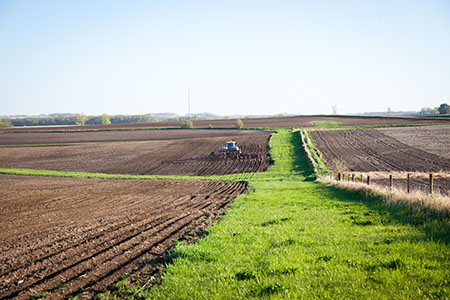 Talk to Your FMH Agent About ECO
Talk to Your FMH Agent About ECO
Benes and Ripley said the best thing interested growers can do is talk to their FMH agent, who can help them review their own county’s historical data, assess their operation’s individual risk needs, and provide them with a quote on ECO coverage.
Learn more or find an agent: www.fmh.com/lead/eco
Blog Posts Widget - Blog Posts Lists Template
-
Reporting Acreage with FMH Precision Solutions
Many policyholders already collect precision ag data during planting. Put that data to work to report acreage for crop insurance with FMH Precision Solutions.Full story -
Prepping Your Customers for Planting with Precision
Help your farmers use the precision data they're already collecting to simplify planting and reporting this spring.Full story -
Q&A with an FMH Precision Tech Specialist
Learn how our expert staff supports agents getting started with Precision SolutionsFull story -
Traditional vs. Precision Claims: What Are the Differences?
Oct 16, 2023, 14:01 by Eric RicheLearn how Precision Solutions can lead to simplified claims and easier APH reviews for your customers.Full story -
See How Precision Solutions Saves Premium and Improves APH
See the difference with examples from our recent FieldView™ Partner Connect webinar.Full story

